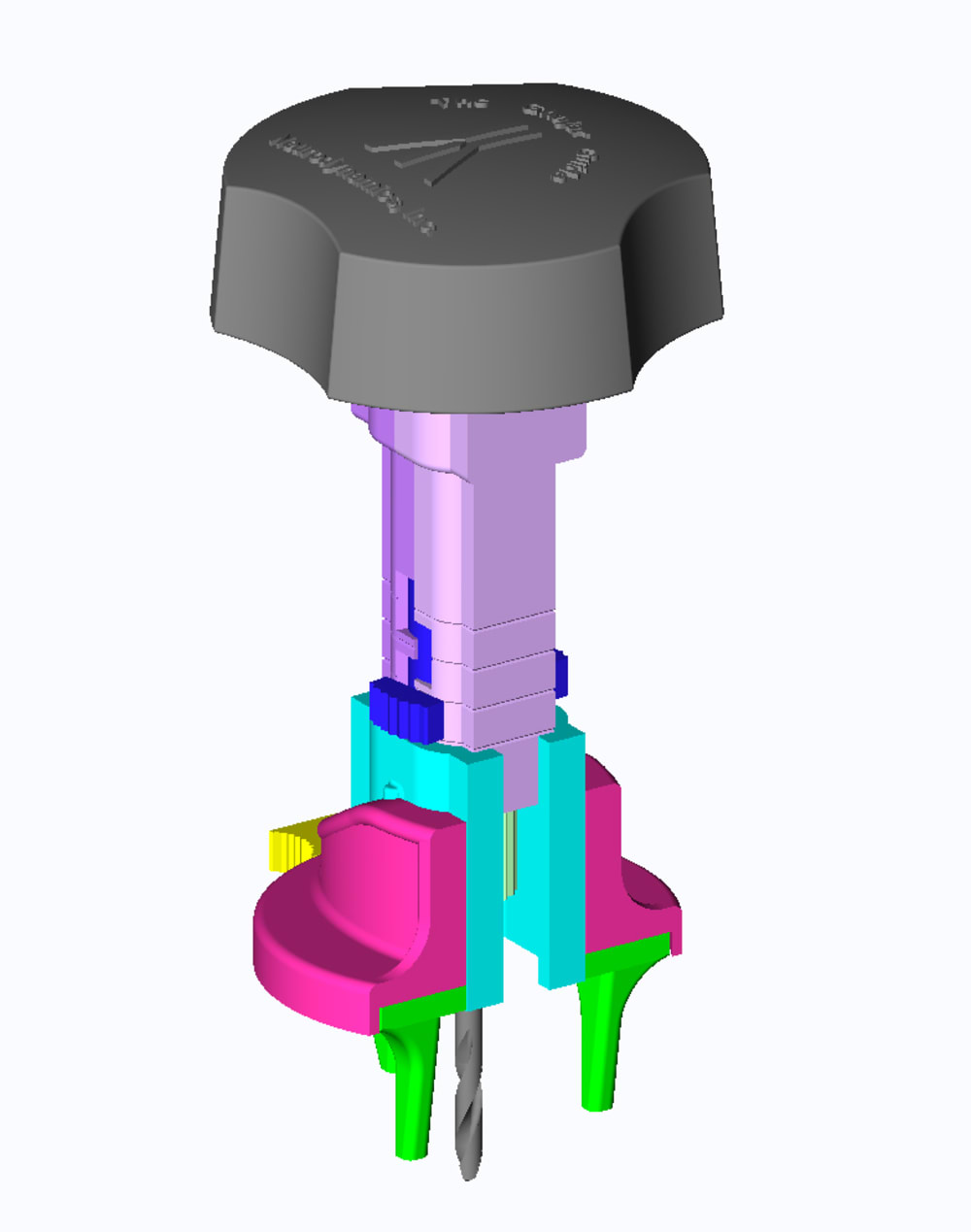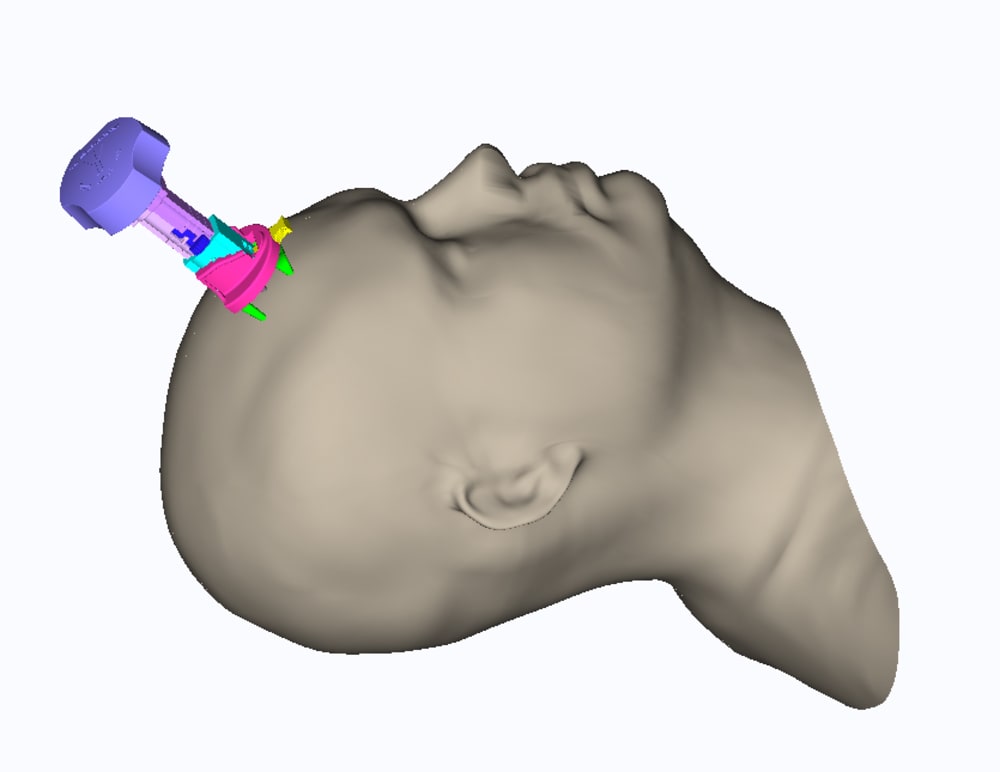
A traumatic brain injury is caused by a severe impact such as a blow or jolt to the head that injures the brain. Such impacts may result in concussion or, in extreme cases, death.
Most traumatic brain injury patients must be diagnosed and treated rapidly to prevent long-term impairment. Post trauma, it is essential to measure various vital signs of the brain such as pressure, oxygenation, pH, CO2, etc. to determine its status. Currently instrumentation to measure these parameters exists, but they must be placed in or on the brain to collect the appropriate data.
The medical practitioner must drill through the cranial bone protecting the brain at specific angles to accurately place these minimally invasive instruments. The angle of the burr hole will determine the ease of placement and removal of each tool. This access device allows the medical practitioner to drill at the optimum angle for each respective diagnostic apparatus.
Drilling through the cranial bone poses the additional risk of plunging the drill bit directly into the brain. The medical practitioner, at best, can estimate the thickness of the cranial bone and may inadvertently break through the inner table of the skull with the drill bit causing damage to the tissue. This access device has specific safety features incorporated into the design that will, in all cases, prevent catastrophic penetration of the brain by the drill bit.
For patient safety and treatment any access device must control three parameters: angle control, control of the exact position of the drill bit at all times and the speed of penetration. This type of drilling versatility is available in some power drills in controlled settings, but has not been available for handheld devices designed for use in emergency rooms or under field conditions.
The principal concern of the current cranial access device is patient safety. It is a hand held manually operated high-speed drill that has been designed with depth and angle control to allow a medical practitioner to rapidly access the brain with minimal risk to patient. This manual cranial access device is composed of four distinct components:
• A handle incorporating a speed-increasing gearbox that will provide higher drill bit speeds for faster penetration of the cranium.
• A guide casing that allows the end user to change the drill bit depth “on the fly” with fixed stops that prevent excessive penetration.
• A guidance device that will allow the end user to select the specific angle of penetration of the drill bit.
• A set of drill bits that are color coordinated for size. Each bit will have a specific plastic holder that will integrate with the drill assembly.
This device will allow a medical practitioner to rapidly access the brain and place life saving instrumentation that will allow positive treatment of traumatic brain injury patients.
-
Awards
-
 2013 Top 100 Entries
2013 Top 100 Entries
Like this entry?
-
About the Entrant
- Name:Fathali Ghahremani
- Type of entry:teamTeam members:Fathali Ghahremani
Justin Ma
Jamshid Ghajar - Software used for this entry:Cobalt and Solid works
- Patent status:pending





